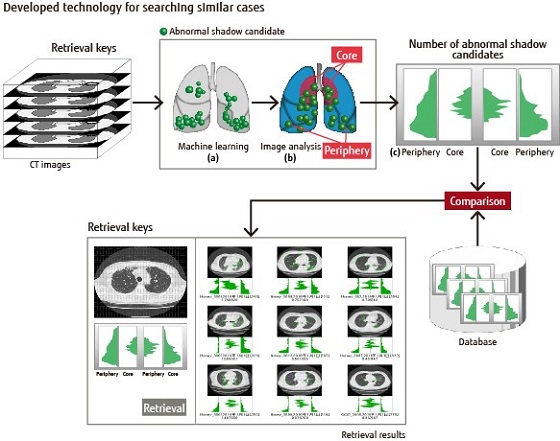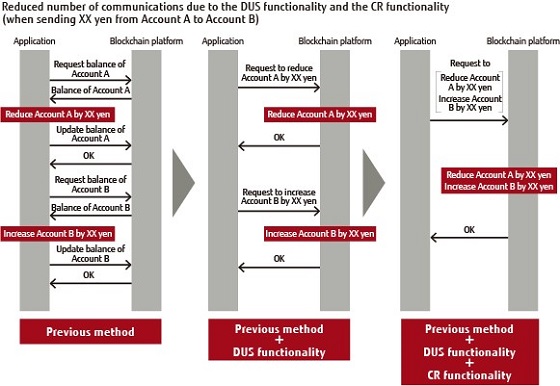- Policy and Action Plan
-
Our Customers and Society
- Developing Innovative Technologies for Solving Environmental Issues
- Reduction of Environmental Burden in Our Business Activities
- Environmental Management and Communication with Society
- Environmental Data
Archived content
NOTE: this is an archived page and the content is likely to be out of date.
Developing Innovative Technologies for Solving Environmental Issues
Our Approach
Fujitsu Laboratories, the core research and development (R&D) organization in the Fujitsu Group, recognizes environmental contribution as a priority theme and conducts R&D in diverse fields ranging from advanced materials, next-generation devices, computers, networks, and ICT systems to the creation of next-generation solutions, services, and business models—all with the goal of contributing to a sustainable society.
Drawing on these efforts to develop innovative technologies and embracing its mission to create technologies that can help solve social and environmental problems, Fujitsu Laboratories promotes environmental activities ranging from CO2 emission reductions through energy conserving practices and work task-efficiency improvements to resource-saving initiatives, countermeasures for natural disasters, the preservation of biodiversity, and efforts to combat global warming.
FY 2017 Performance and Results

Showcasing Developed Technologies to the World
Fujitsu's Environmental Action Plan (Stage VIII) includes the objective of enhancing the company's ability to showcase the green-oriented technologies in its development portfolio to the public. In FY 2017, we advertised our ICT environmental value outside of the Group by giving presentations at press releases, academic society meetings, and exhibitions.
In terms of the SDGs, the technologies that Fujitsu announced in FY 2017 contribute primarily to five goals: "Ensure healthy lives and promote well-being for all at all ages" (Goal 3), "Build resilient infrastructure, promote inclusive and sustainable industrialization and foster innovation" (Goal 9), "Make cities and human settlements inclusive, safe, resilient and sustainable" (Goal 11), "Take urgent action to combat climate change and its impact" (Goal 13), and "Protect, restore and promote sustainable use of terrestrial ecosystems, sustainably manage forests, combat desertification, and halt and reverse land degradation and halt biodiversity loss" (Goal 15).
FY 2017 Development Performance (items appearing in the media)
- "fipick," a direct device-to-device communication technology without the need for infrastructure
- Technology for ultra-slim palm vein authentication
- Development of "Digital Annealer" computational architecture for high-speed solving of combination optimization problems
- Technology for using AI-powered chat to respond automatically to call center inquiries
- Development of positive electrode material for lithium iron phosphate batteries possessing high voltage
- Information-oriented networking technology for connecting participants in data distribution markets
- Technology for embedding information to LED light and receiving information via smartphone cameras
- AI-based technology to retrieve similar disease cases in CT inspections
- Virtual machine control technology to improve server density of datacenter racks
- Design technology for circuits and GaN-HEMT high-output devices using millimeter-wave bans
- Technology for speeding up transaction processing on the blockchain
- Technology using AI to estimate the degree of internal damage to bridge infrastructure
- AI-based matching technology to calculate an optimal matching of children to daycare center
- World's highest transmission density optical transceiver and high-speed energy efficient optical modulator technology
- Development of a GaN-HEMT AC adapter for significantly reducing power consumption when charging mobile devices
- Technology for automatically generating patch candidates for new bugs during program debugging
- Technology using open data for visualization and analysis of municipality characteristics from the perspectives of environment, society, and economy
- Technology for highly accurate estimation of ship performance (ship speed, amount of fuel consumed, etc.)
- Wireless communication high-capacity technology for fifth generation mobile communications
- Technology for using AI when processing measurement data of mass spectrometers
- Security technology to safely connect blockchains
- High accuracy tsunami Prediction technology which considers tsunami propagation characteristics unique to the region
- WAN (Wide Area Network) acceleration technology utilizing FPGA accelerators
- Development of the world's smallest sensor device supporting LPWA (Low Power Wide Area) communication that eliminates need for battery replacement
- Technology for collecting/analyzing operation data from the entire cloud and then visualizing/adjusting operation of customer systems
Main Development Initiatives in FY 2017
AI-based Technology to Retrieve Similar Disease Cases in CT Inspections

Previously, for early lung cancer and cases in which abnormal shadows are concentrated in a single location, doctors used technology which searched for similar cases based on CT images. However, for patients of diffusive lung disease such as pneumonia, abnormal shadows spread in a three-dimensional form throughout the entire organ. In such cases, it was necessary for doctors to confirm three-dimensional similarity. Accordingly, it took a long time for doctors to make a judgment.
Recently, Fujitsu Laboratories Ltd. developed CT inspection technology for searching cases with similar three-dimensional spreading of abnormal shadows from among databases of CT images taken in the past. First, the technology uses machine learning to identify abnormal shadow candidates from CT images (Figure (a)). Next, the technology divides the lung into core and peripheral ranges (Figure (b)) by successively estimating the border between the center and periphery based on relatively clear portions of the CT images. Finally, the technology plots a histogram along the body axis in the vertical direction (Figure (c)) for the number of abnormal shadow candidates existing in both the core and peripheral ranges and examines the characteristics of three-dimensional spreading in the abnormal shadows, thereby searching for similar cases.
The technology shortens the diagnosis time for cases which previously required a long time for doctors to make a judgment. Accordingly, the technology is expected to increase the efficiency of clinical procedures.

Technology for Speeding up Transaction Processing on the Blockchain

Blockchain technology makes it possible to achieve systems with superior resistance to tampering while also ensuring high transparency and reliability-all without the need for a centralized manager. Accordingly, there are high expectations for the use of blockchain in various industries such as finance.
Recently, Fujitsu Laboratories Ltd. succeeded in increasing efficiency for the previous bottleneck of communication processing between the application and blockchain infrastructure. By doing so, Fujitsu Laboratories developed two technologies (differential update (DUS) functionality and compound request (CR) functionality) for increasing the speed of transaction processing. Upon installing these technologies in Hyperledger Fabric v0.6.1(Note) and performing measurement, we achieved an increase in speed of approximately 2.7 times in transaction performance compared to previous methods. This technology makes it possible to apply blockchain technology to online transaction systems which require high performance.
(Note) Hyperledger Fabric v0.6.1:
Stable version of open source software framework in relation to blockchain (as of July 5, 2017)

Virtual Machine Control Technology to Improve Server Density of Datacenter Racks

Currently, the number of servers mounted per rack at datacenters is decided by keeping the total value for the server rated power below the power supply amount of the rack. However, there are actually many cases in which the server load is about 10% to 50%. This means that the amount of power used per rack in proportion to load is low compared to the rated power.
Recently, Fujitsu Laboratories Ltd. developed virtual server control technology to achieve efficient server allocation. This technology establishes a partition made up of backup servers in the datacenter and then migrates virtual servers to the backup partition based on the physical distribution and power consumption of the virtual servers. This makes it possible to reduce datacenter space by improving the mounting density for racks with operating virtual servers. In one case with a server rack operation rate of 90%, calculation showed a space reduction of 40%.

Virtual machine control technology to improve server density of datacenter racks
